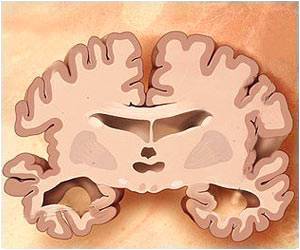 A minimum of seven minutes of vigorous physical activity daily is a must for children to stay healthy, a recent study finds. "If you watch late-night television, or look in the backs of magazines, you'll see magical ads saying you need just 10 minutes a day or five minutes a day of exercise to stay fit. And for those of us in the medical field, we just rolled our eyes at that. But surprisingly, they may actually be right and that's what this research shows," says co-principal investigator Richard Lewanczuk, a researcher with the Faculty of Medicine & Dentistry at the U of A.
A minimum of seven minutes of vigorous physical activity daily is a must for children to stay healthy, a recent study finds. "If you watch late-night television, or look in the backs of magazines, you'll see magical ads saying you need just 10 minutes a day or five minutes a day of exercise to stay fit. And for those of us in the medical field, we just rolled our eyes at that. But surprisingly, they may actually be right and that's what this research shows," says co-principal investigator Richard Lewanczuk, a researcher with the Faculty of Medicine & Dentistry at the U of A."Our research showed children don't need a lot of intense physical activity to get the health benefits of exercise – seven minutes or more of vigorous physical activity was all that was required. But the seven minutes had to be intense to prevent weight gain, obesity and its adverse health consequences. And most kids weren't getting that." Lewanczuk worked on this study with Jonathan McGavock, his co-principal investigator and former post-doctoral fellow, who now works with the Manitoba Institute of Child Health. They collaborated with Black Gold Regional Schools in Leduc and surrounding communities just south of Edmonton, as well as researchers from the University of Manitoba, Queen's University, the University of Newcastle, and U of A researchers from the Faculty of Medicine & Dentistry, the School of Public Health, Physical Education and Recreation, and Agricultural, Life and Environmental Sciences. The team's findings were recently published in the peer-reviewed journal Archives of Pediatrics & Adolescent Medicine.
More than 600 children, between the ages of nine to 17 from Leduc and surrounding areas, wore monitors that tracked their physical activity levels for seven days. These children also had their weight, waist circumference and blood pressure regularly monitored.
Researchers reviewed the data collected through the Healthy Hearts program via Black Gold Regional Schools and determined the children spent almost 70 per cent of their time doing sedentary activities; nearly 23 per cent was devoted to light physical activity; almost seven per cent to moderate physical activity and 0.6 per cent to vigorous physical activity.
Overall, boys were less sedentary than girls. And the more vigorous the physical activity, the less apt the children were to be overweight. Children who were overweight had improved fitness levels and shrinking waist lines when they increased the amount of time spent doing vigorous activities.
Lewanczuk said the team made some other notable findings including the following: there weren't the expected health benefits from doing only mild or moderate activity even if the time spent doing this type of activity increased. What seemed to be critical was taking part in intense physical activity. For kids who took part in vigorous physical activity that lasted longer than seven minutes, their health benefits were significantly better. And the whole notion of being overweight but fit? The team's data didn't support that finding in children. If children were overweight, they were also unhealthy, Lewanczuk says.
"This research tells us that a brisk walk isn't good enough," says Lewanczuk, a professor in the Department of Medicine who has been studying this topic for eight years. "Kids have to get out and do a high-intensity activity in addition to maintaining a background of mild to moderate activity. There's a strong correlation between obesity, fitness and activity. Activity and fitness is linked to a reduction in obesity and good health outcomes."
Getting young children to make vigorous physical activity part of their daily routines is important, especially considering activity levels in the teenage years drop right off, Lewanczuk says. And previously published research from the same group of children shows kids are more active at school than they are at home.
"Quite often the activity levels on evenings or weekends would be almost flat," he says. "We made the presumption that kids were just sitting in front of a screen the whole time."
Lewanczuk hopes the research findings will help schools decide what type of mandatory physical activity is needed.
He praised the school district involved in the study, noting the research wouldn't have been possible without its support.
Paul Wozny with Black Gold Regional Schools said physical activity is always worthwhile and noted that increased moderate to intense activity was closely associated with lower weights from year to year. He said the Healthy Hearts project has truly created "a school and community culture where regular physical activity and healthy nutrition are seen as essential ingredients for students' health, wellness and life-long learning. Everyone is involved – students, their parents, teachers, staff, researchers and the community as a whole.
"We are always striving to improve, so we regularly review the research results to help us fine tune and develop future activity and wellness programming at all of our school communities. Black Gold Regional Schools' Health Hearts project has received both national and international recognition as a world-leading school and community initiative dedicated to the improvement of student cardiovascular health through regular physical activity and multi-stakeholder support."
The primary funders of the research were: the Canadian Diabetes Association and the Alberta Center for Child, Family and Community Research.
"The Canadian Diabetes Association is proud to be a leading supporter of diabetes research in Canada, investing more than $7 million annually in diabetes research," said Janet Hux, chief scientific advisor for the Canadian Diabetes Association. "The association encourages Canadians to pursue healthy lifestyles in order to prevent and manage diabetes. Dr. Lewanczuk's work provides important new insights that may make enhanced activity more feasible for children and youth."
The Alberta Center for Child, Family and Community Research added: "Having this kind of evidence should make it easier for parents, schools and daycare programs to do activities with children that will help develop lifelong healthy attitudes towards exercise and activity," stated Alberta Center for Child, Family and Community Research President and CEO, Robyn Blackadar.









